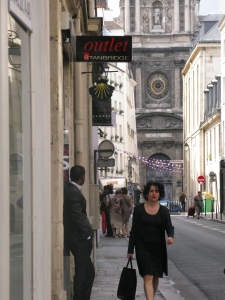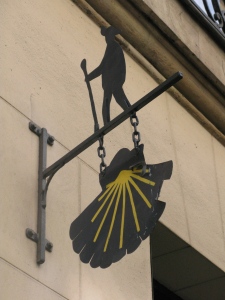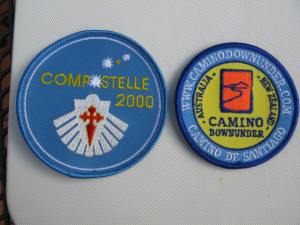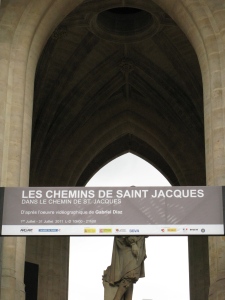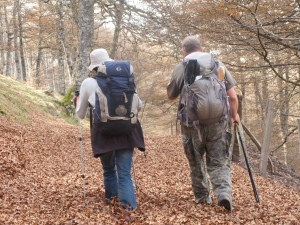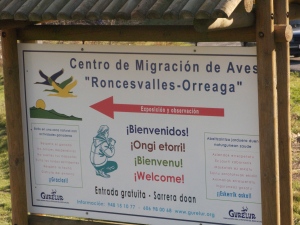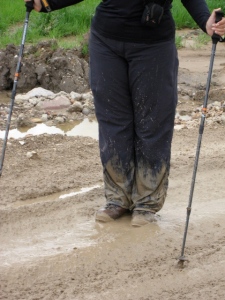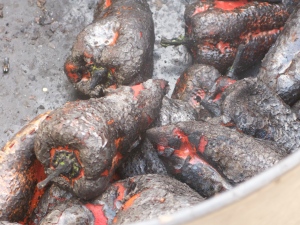For most Antipodeans (Australians and New Zealanders); Asians and non-Europeans undertaking the Camino de Santiago, their preferred arrival and entry point into Europe is Paris.
Most pilgrims and walkers fly into Charles de Gaulle (CDG) airport, located to the northeast of Paris; making their way into the French capital for a day or two and then catching an early morning TGV train at Montparnasse railway station (the 14th arrondissement in Paris and on the Left Bank) and arriving 5, 6 or 7 hours later (depending on how many stops and detours between Paris and Bayonne (near Biarritz on the southwest Atlantic coast near Spain).
There at Bayonne, from SNCF – TGV they change to the local TER (Train Express Régional) going to Saint-Jean-Pied-de-Port, commencing the next day, their Camino de Santiago journey up and down the Pyrenees, into Spain and all the way west to Santiago de Compostela.
Almost without exception, all these first-timers on the pilgrimage track (Camino Francés) are feeling acutely their stress, showing great anxiety and mixed with overflowing excitement. The first few hours walking from SJPdP dissipates their stress and anxieties because of the incredibly steep walk just outside the town, along the GR65.
The real, hard but exciting physical and mental work now begins in earnest. However, let’s geographically rewind and take a closer look at Paris and its connections past and present for Western European pilgrimage.
If you are staying in Paris for a day or two and you’re not too far from the Marais district, Camino Downunder recommends you pay a visit to the headquarters of the local Friends of the Camino organisation for Paris and its region (Ile de France).
The local friends are called: «COMPOSTELLE 2000» and their shop, offices and meeting rooms (headquarters) are on the ground floor and in the terribly fashionable and elegant rue de Sévigné at number 26, postcode 75004 in the very heart of Paris and in its medieval centre, very close to Place des Vosges. This district in the 4th arrondissement, was badly run down some four to three decades ago, but now: chic, urbane, vibrant and very Parisian.
On their homepage they state the following:
Depuis 1998, Compostelle 2000 apporte une aide personnalisée aux pèlerins et aux randonneurs partant pour Saint Jacques de Compostelle.Compostelle 2000 organise de nombreuses activités qui vous permettront de vous préparer physiquement, matériellement et mentalement au chemin de Compostelle.N’hésitez pas à venir nous rendre visite au siège de l’Association…
Office hours are Monday to Friday, from 10.00 am until 12.00 pm and from 2.00 pm until 6.00 pm. The two-hour lunch break from midday is very French, mostly observed outside the main cities. However, because this Association is entirely manned by volunteers – they are entitled to a traditional two hour lunch break. However, in Spain and certainly on the Camino tracks once 1.00 pm arrives, all shops (big and small) including food stores (but not café-bars serving the pilgrimage traffice) close until at least 5.00pm – this continues the great Spanish siesta tradition.
Compostelle 2000 stands out as a volunteer organisation because of the extraordinary and ground breaking work it does in supporting and assisting some very physically and intellectually disabled people to “walk” the French and Spanish pilgrimage tracks. Each year, physically and intellectually disabled people from France are now included on the pilgrimage tracks: they are no longer excluded. A modern and equitable society is ultimately judged by how inclusive it is to its disabled citizens.
Spanish society is also inclusive: some Spanish pilgrim hostels have special and dedicated rooms for their disabled citizens. An interesting story: the writer and his wife in 2007 observed and at times walked several days with a group of 7 blind Spanish pilgrims and their 3 seeing eye dogs walking the last 100 kilometres from Sarria to Santiago de Compostela: only one in the group had very limited vision and they were not accompanied by any seeing person. One of the bind males in the group of both genders, wore a T-shirt and written in large letters were the following Spanish text: DEMASIADO SEXO, NUBLA LA VISTA (in English: Too much sex, blurs your vision). 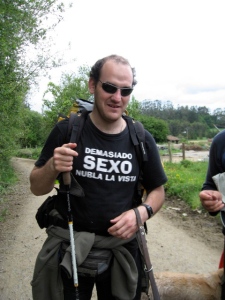 See photo below, on the right.
See photo below, on the right.
In France, we are talking about paraplegics and quadriplegics who are placed in a special seat which has just one wheel underneath and two extended front handle bars and an extended rear handle bar requiring two able-bodied persons to keep it upright and moving – one in the front and one in the back. More volunteers are needed for supply, support and cooking. And there are relay teams who then take over, after a number of days. This contraption is a French invention, called la Joëlette – named after its inventor: a mountaineer and guide called Joël Claudel for his disabled nephew. See photo of a Joëlette in operation.
